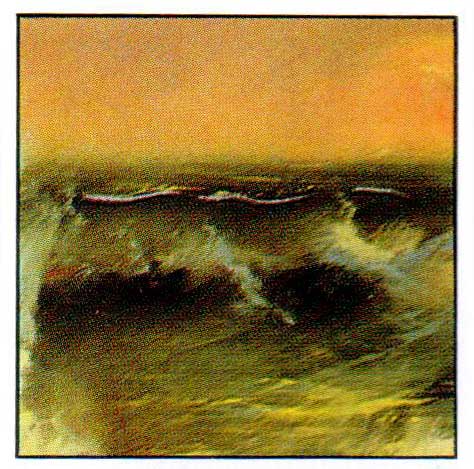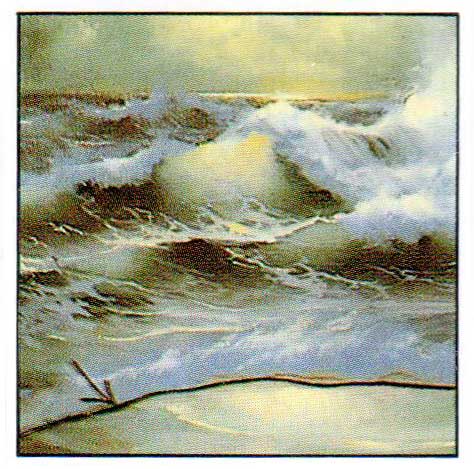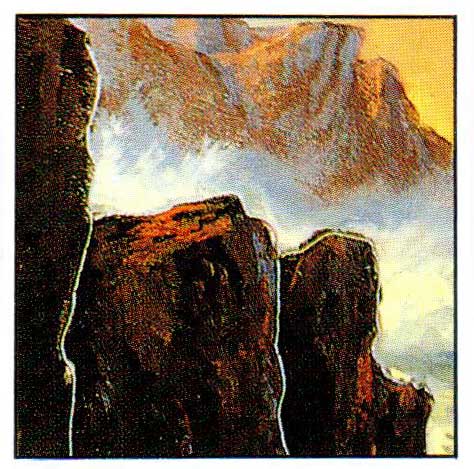Before we get too far into the tips and techniques, let’s get some basic seascape terms down so we’re all on the same page.
| Photo | Description |
|---|---|
| Crest of the Wave | |
 |
The top portion of the edge of the wave before it breaks. |
| Dump of the Wave | |
 |
A “dump” occurs when the wave breaks and crashes to the surface water below. It is the dark water within the breaking wave that appears to be “bending over.” |
| Eye of the Wave | |
 |
The top, thin part of the wave, roughly in the shape of an oval, that allows the light from the sun to come through. It often becomes the center of interest of the painting. |
| Saddle of the Wave | |
 |
The “saddle” of a wave is the curved space of water joining two wave peaks. |
| Swell of the Wave | |
 |
A wave at its earliest stage of growth. A long, crestless wave or series of waves in the open sea. |
| Foam | |
 |
The white, frothy part of a breaking wave. It is caused when the wave breaks and crashes into the water below. Often you will see foam on the crest of a wave, and it will also form when a wave crashes into a rock or cliff. |
| Foam Patterns | |
 |
The friction of the breaking wave and the current of rushing water returning out to sea create lines of foam which lie on the surface of the water. “Foam patterns” create the illusion of water movement in your painting. |
| Horizon Line | |
 |
A horizontal line running somewhere near, but never at, the center of your canvas. It is important to keep the line level and parallel to the top and bottom of the canvas. |
| Shore Line | |
 |
The line where water meets land. In seascape painting land is often in the form of a rocky or sandy beach. |
| Rock Profile | |
 |
The side view of a cliff, mountain, or rock showing its outline in silhouette. |
There we go. Now everyone’s on the same page.
Tomorrow, we’re going to give you some hints on making your seascapes better.
Don’t forget to sign up to be notified when we launch the course next week. Folks on the list will get a special free bonus when you sign up.


Leave a Reply